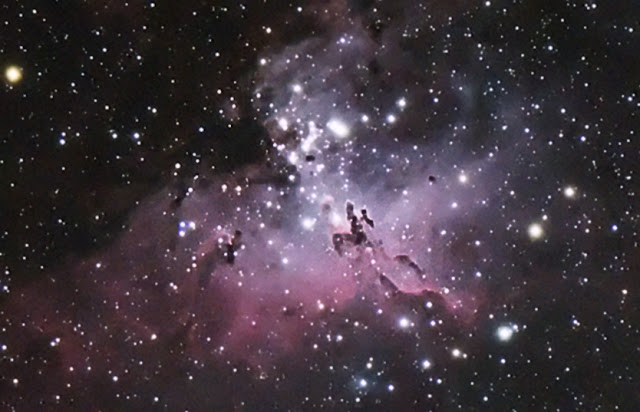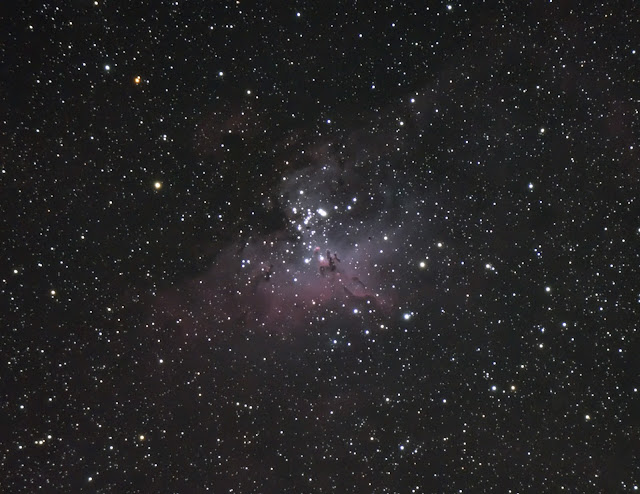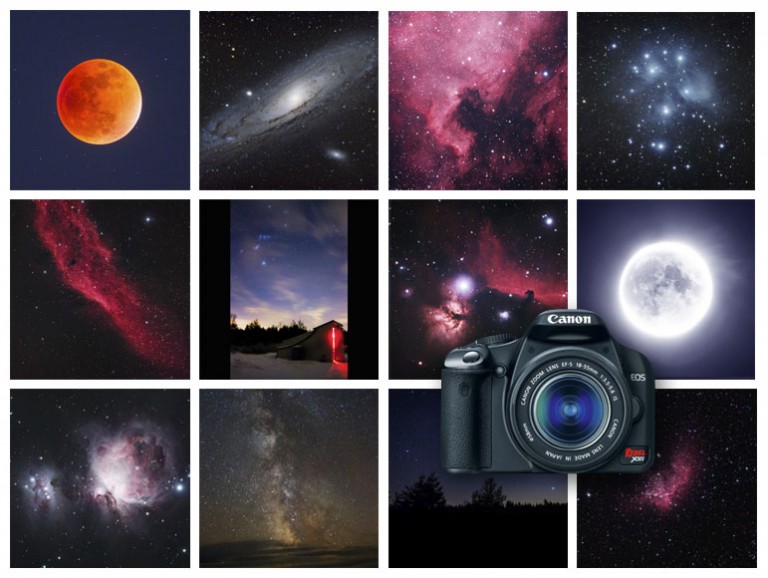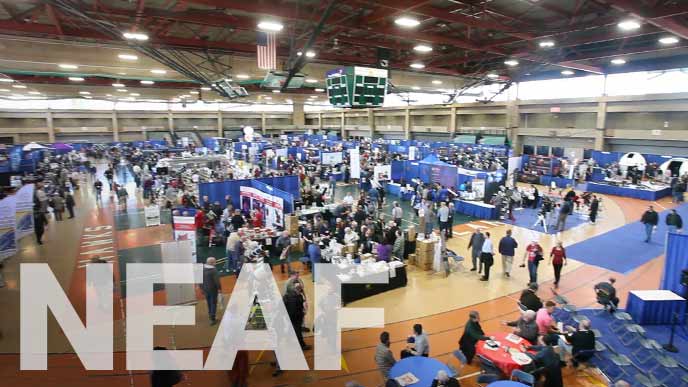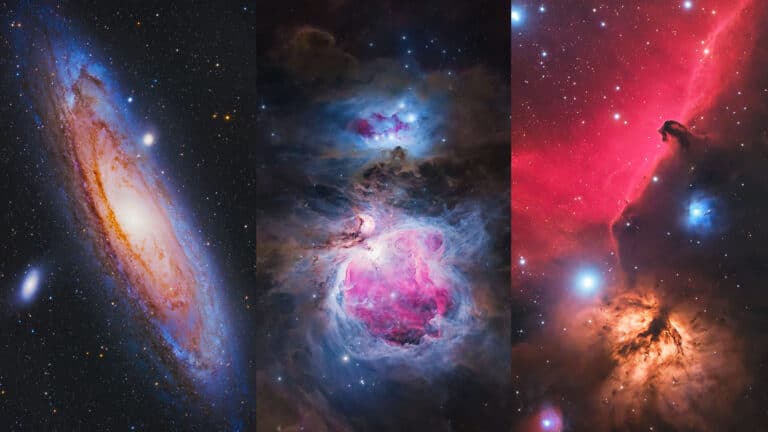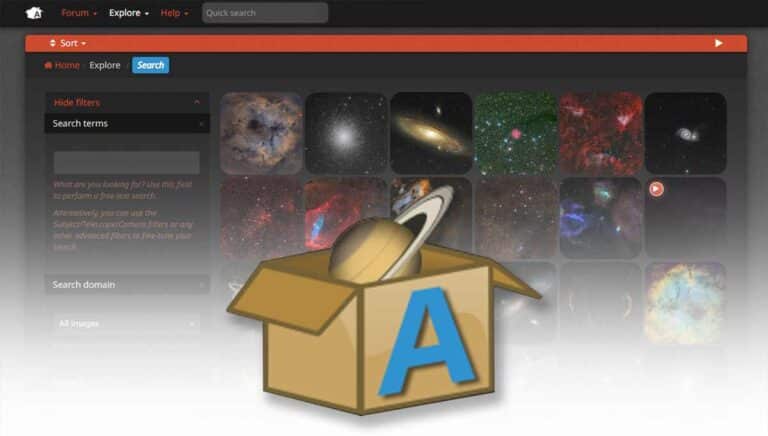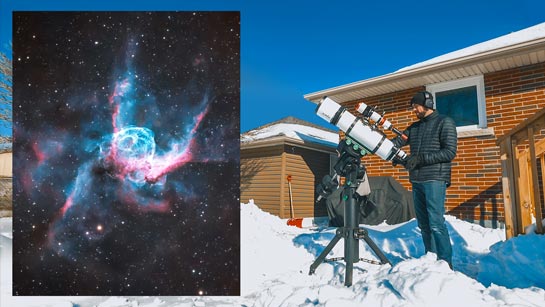Springtime Astronomy
In the image above, you may notice how large and bloated the stars look. This is partly due to image resolution, but also the broadband light pollution filter used as well (Hutech IDAS LPS).
A narrowband filter such as the Astronomik 12nm clip-in h-alpha filter will help record important nebulae structure, without bloated stars.
Related Video: Astrophotography Image Processing Tutorial
M17 – The Swan Nebula (Re-Processed)
The weather has been very warm for this time of year, and the skies have been relatively clear lately! Now that I have got a taste of darker skies at the CCCA Observatory, I make the 40 minute trip out there quite often (Sometimes by myself!).
I took the image below of the Eagle Nebula from the observatory on the Friday night before the May Two-Four long weekend. (The cropped version is at the top of the post).
There really is no substitute for dark skies, and this can make the image processing stage a lot more enjoyable. Unfortunately traveling to a dark sky site is not always possible, so I must be able to process images captured under an urban light-polluted sky as well.
M16 – The Eagle Nebula
Photo Details:
21 x 240″ ISO 1600
Stacked with darks
Equipment Used:
Telescope: Explore Scientific ED80
Mount: Celestron CG-5
Autoguiding: Orion 50mm Mini Guidescope & Meade DSI II
Camera: Stock Canon 450D
Processing:
Stacked in DeepSkyStacker
Processed in Adobe Photoshop CS5
If you’re just getting started in astrophotography, the following guide will help you understand the basics of capturing an image of the night sky:
